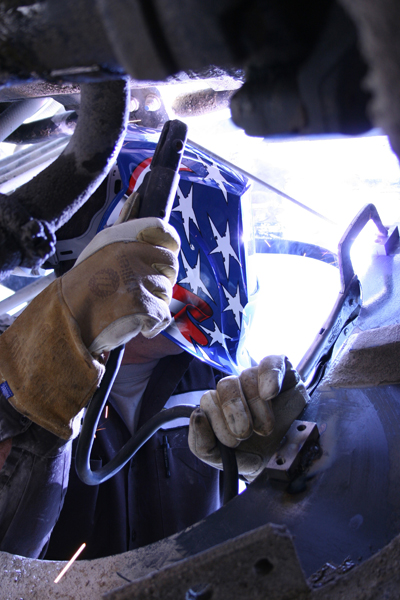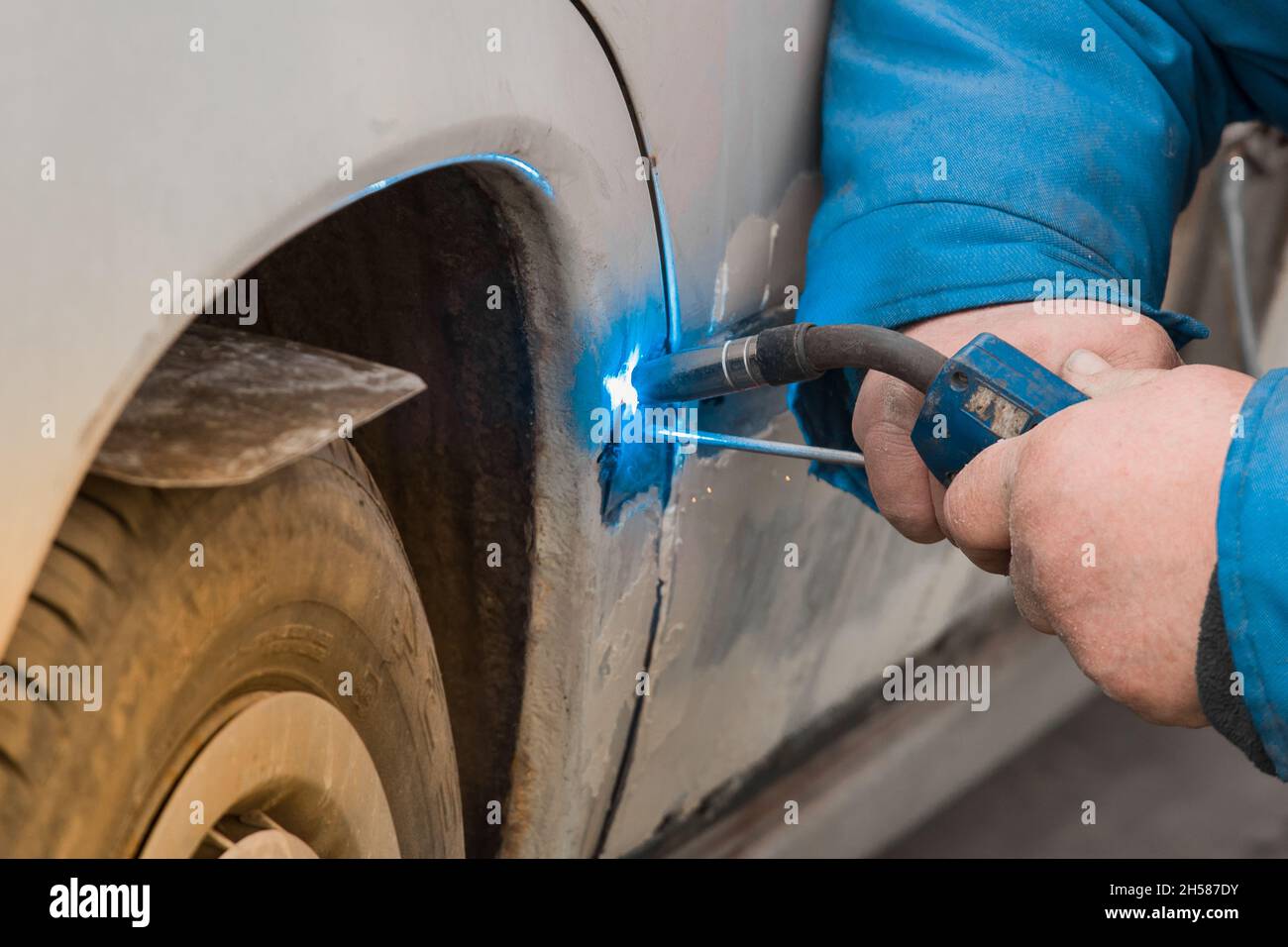Common Welding Repair Service Issues and How to Address Them Effectively
Welding repairs often come across a variety of problems that can threaten the stability of the final item. Usual issues consist of insufficient infiltration, porosity, and misalignment, to name a few. Each problem provides distinct difficulties that require details strategies for resolution. Comprehending these issues is necessary for welders aiming to boost their end results and skills. This conversation will discover these typical welding fixing concerns and effective methods to resolve them.
Insufficient Infiltration
Insufficient infiltration occurs when the weld metal falls short to totally fuse with the base product, resulting in weak joints and potential architectural failures. This problem commonly stems from inadequate warmth input, wrong electrode angle, or inappropriate welding speed. Welders may come across insufficient penetration due to a miscalculation of the necessary specifications for a particular material density or kind. In addition, contamination on the base material's surface can impede efficient bonding, aggravating the trouble. To deal with insufficient penetration, welders must assure proper settings on their tools and maintain a clean job surface. Normal examination of welds is suggested to identify any shortages early, permitting for timely modifications and the avoidance of endangered architectural stability in bonded assemblies.
Porosity
Porosity is a typical flaw in bonded joints that materializes as tiny gas bubbles caught within the weld steel. This defect can jeopardize the integrity of the weld, bring about minimized toughness and potential failure under stress and anxiety. Montana Mobile Welding and Repair. Porosity generally develops from contamination, dampness, or incorrect welding strategies, which allow gases to escape right into the liquified weld swimming pool. To attend to porosity, welders ought to assure appropriate surface prep work, keep a tidy workplace, and make use of ideal welding criteria. Furthermore, choosing the appropriate filler product and protecting gas can reduce gas entrapment. Routine examination and testing of welds can help identify porosity early, guaranteeing prompt rehabilitative activities are taken, consequently maintaining the top quality and integrity of the welded framework
Imbalance
Imbalance in welding can arise from different aspects, consisting of improper configuration and thermal growth. Recognizing the origin is essential for reliable resolution. Several correction strategies are offered to realign components and assure architectural stability.
Reasons for Misalignment
Welding imbalance commonly comes from a range of underlying concerns that can jeopardize structural integrity. One primary reason is inappropriate fit-up of components before welding, which can cause spaces and unequal surfaces. Variations in thermal development during the welding procedure can additionally cause distortion, specifically if the materials being joined have various coefficients of growth. Furthermore, inadequate fixturing and clamping may fail to hold parts firmly in position, bring about activity during welding. Badly maintained tools, consisting of welding machines and devices, might introduce inconsistencies in the weld grain, further adding to misalignment. Driver error, stemming from not enough training or experience, can additionally play a significant duty in producing misaligned welds.

Improvement Techniques Readily Available
Addressing misalignment efficiently requires a combination of corrective strategies customized to the certain issues handy. One common approach is using jigs or components to hold components in the appropriate placement during welding, making sure consistent placement. Additionally, pre-heating the materials can aid lower distortion and enhance fit-up. For significant misalignment, mechanical adjustment techniques, such as using hydraulic jacks or clamps, can be used to fix the setting before welding. Post-weld heat therapy might likewise be necessary to ease stress and anxieties triggered by imbalance. Finally, mindful inspection and change during the configuration phase can avoid misalignment problems from becoming substantial troubles, advertising a smoother welding procedure and enhancing total architectural integrity.
Distortion
Distortion is an usual difficulty in welding that can emerge from numerous aspects, including uneven home heating and cooling. Understanding the reasons for distortion is necessary for executing reliable avoidance techniques. Addressing this problem not just enhances architectural stability yet likewise improves the total quality of the weld.
Reasons of Distortion
When based on the intense warmth of welding, materials commonly undertake changes that can result in distortion. This sensation largely arises from thermal growth and tightening throughout the welding process. As the weld area warms up, the material expands; upon air conditioning, it acquires, which can produce interior anxieties. Furthermore, uneven heating across a work surface can exacerbate these tensions, resulting in warping or flexing. The kind of product additionally plays a significant duty; steels with differing thermal conductivity and coefficients of growth might react differently, resulting in uncertain distortions. Additionally, bad joint layout and poor fixturing can add to misalignment throughout welding, raising the probability of distortion. Recognizing these reasons is important for reliable welding fixing and avoidance approaches.
Avoidance Techniques
Reliable avoidance strategies for distortion during welding emphasis on managing warmth input and making sure proper joint layout. Keeping a consistent warmth input helps to decrease thermal growth and tightening, which can bring about distortion. Using strategies such as pre-heating the workpiece can additionally minimize the temperature level slope, advertising consistent heating. Additionally, choosing useful site ideal joint designs, such as T-joints or lap joints, can enhance security and reduce anxiety focus. Executing appropriate fixturing to secure the work surfaces in area better help in preserving alignment during the welding procedure. Ultimately, staggered welding sequences can distribute heat more equally, stopping localized distortion. By using these methods, welders can significantly lower the probability of distortion and enhance the general quality of their welds.
Breaking
Splitting is an usual issue encountered in welding fixings, usually arising from various elements such as inappropriate air conditioning prices, material choice, or poor joint prep work. The incident of cracks can significantly jeopardize the stability of the weld, bring about prospective failures throughout operation. To address this problem, welders should initially analyze the source, making certain that materials work and properly picked for the certain application. Furthermore, controlling the air conditioning rate throughout the welding process is important; quick air conditioning can generate stress and result in fracturing. Correct joint layout and preparation also add to lessening the risk. Implementing these methods can boost weld quality and longevity, ultimately reducing the chance of breaking in completed weldments.

Insufficient Blend
A significant issue in welding repairs is incomplete blend, which takes place when the weld metal does not effectively bond with the base material or previous weld passes - Montana Mobile Welding and Repair Welding. This defect can cause weak points in the joint, possibly compromising the honesty of the welded framework. Factors contributing to insufficient combination consist of not enough warm input, inappropriate welding method, and contamination of the surface areas being signed up with. To resolve this problem properly, welders ought to assure proper pre-weld cleaning and surface preparation, along with change their welding specifications to achieve ample penetration and blend. Routine examination during the welding process can likewise help determine incomplete combination early, enabling prompt corrective procedures to boost the total quality of the weld
Overheating
While welding repairs can improve structural honesty, overheating offers a substantial challenge that can bring about material deterioration. Too much warm throughout welding can alter the mechanical buildings of steels, causing minimized strength, boosted brittleness, and warping. This sensation is particularly critical in high-stress applications where structural integrity is paramount. Identifying getting too hot can involve visual assessments for staining or distortion, as well as keeping an eye on temperature throughout official site the welding process. To reduce the dangers connected with overheating, welders should employ suitable methods, such as controlling heat input, adjusting travel speed, and using ideal filler products. Furthermore, carrying out pre- and post-weld warmth treatments can assist bring back product residential or commercial properties and enhance the overall top quality of the fixing, ensuring long-lasting performance and security.
Frequently Asked Concerns
What Are the Typical Signs of a Welding Problem?

Exactly How Can I Evaluate My Welds for Top quality?
To test welds for high quality, one can make use i thought about this of visual inspections, ultrasonic testing, and radiographic methods. Each technique ensures structural integrity, identifies defects, and validates adherence to defined criteria, ultimately improving the integrity of the bonded joints.
What Security Preventative Measures Should I Take While Welding?
When welding, one need to prioritize safety by wearing suitable individual protective devices, guaranteeing appropriate ventilation, protecting combustible products away, keeping a clean workspace, and knowing surroundings to stop injuries and crashes.
Can I Repair a Weld Without Remodeling the Entire Joint?
Fixing a weld without renovating the entire joint is feasible, relying on the damage (Montana Mobile Welding and Repair Belgrade Welding). Methods such as grinding, including filler material, or making use of a welding process can effectively address details problems while protecting the surrounding framework
What Tools Are Important for Effective Welding Repairs?
Essential devices for effective welding fixings include a welding device, wire brush, mill, protective equipment, clamps, and filler materials. Each device plays an essential duty in ensuring high quality and safety during the repair service process. Porosity usually develops from contamination, dampness, or inappropriate welding methods, which permit gases to run away into the liquified weld pool. Poorly maintained equipment, consisting of welding machines and tools, may introduce disparities in the weld bead, additional contributing to imbalance. When subjected to the intense heat of welding, materials often go through changes that can lead to distortion. Fracturing is a common concern encountered in welding repairs, usually resulting from various elements such as improper air conditioning prices, product choice, or inadequate joint preparation. A substantial problem in welding repair work is incomplete fusion, which takes place when the weld steel does not adequately bond with the base material or previous weld passes.